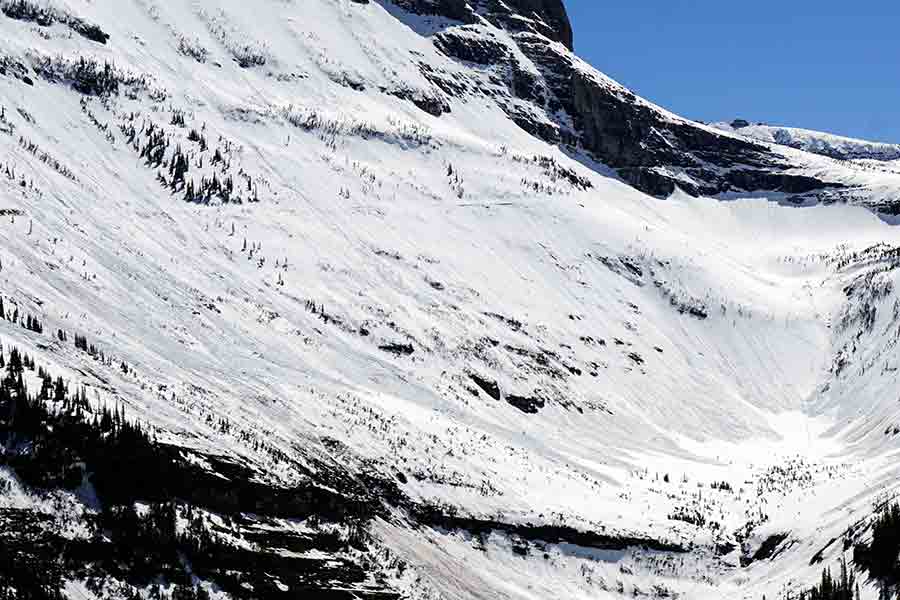A month after beginning the tedious chore of clearing Glacier National Park’s Going-to-the-Sun Road, west-side plow crews are just five miles from the Continental Divide.
As of May 8, the west-side plow crew was at Haystack Creek, about five miles west of Logan Pass. Glacier Park Spokesperson Lauren Alley said the crew had to re-plow some sections of road below Haystack Creek due to a series of avalanches last week. The east-side plow crew was working to clear snow between the Grizzly Pullout and Jackson Glacier Overlook, 13.5 miles west of St. Mary.
Vehicle traffic is still limited to 11.5 miles of the Sun Road, from the West Entrance to Lake McDonald Lodge. The road beyond the lodge is open to hikers and bikers as far as Logan Pit during the week and as far as the snow allows on weekends or days when the plows are not working.
The heavy equipment is approaching the most challenging sections of road to plow. Logan Pass, situated about seven miles from The Loop, is the highest point on the Sun Road at 6,646 feet elevation. Snow depths can climb as high as 80 feet at certain spots, covering all but the roof of the visitor center. Just east of Logan Pass, the so-called Big Drift also presents a difficult task with ample snow, as well as hazardous places where water from snowmelt creates potholes and tunnels that can swallow equipment.
Crews on the east and west sides converge at these two points and tackle them together due to the scope of work. This often requires using hand shovels near the visitor center.
The plows officially began work on the Sun Road on April 1. The process of uncovering the 50-mile road from winter’s wrath typically takes 10 weeks, depending on snow depths and spring weather. Due to these conditions, the National Park Service does not establish a set date for when the iconic road fully opens, but it typically occurs in late June or early July.
